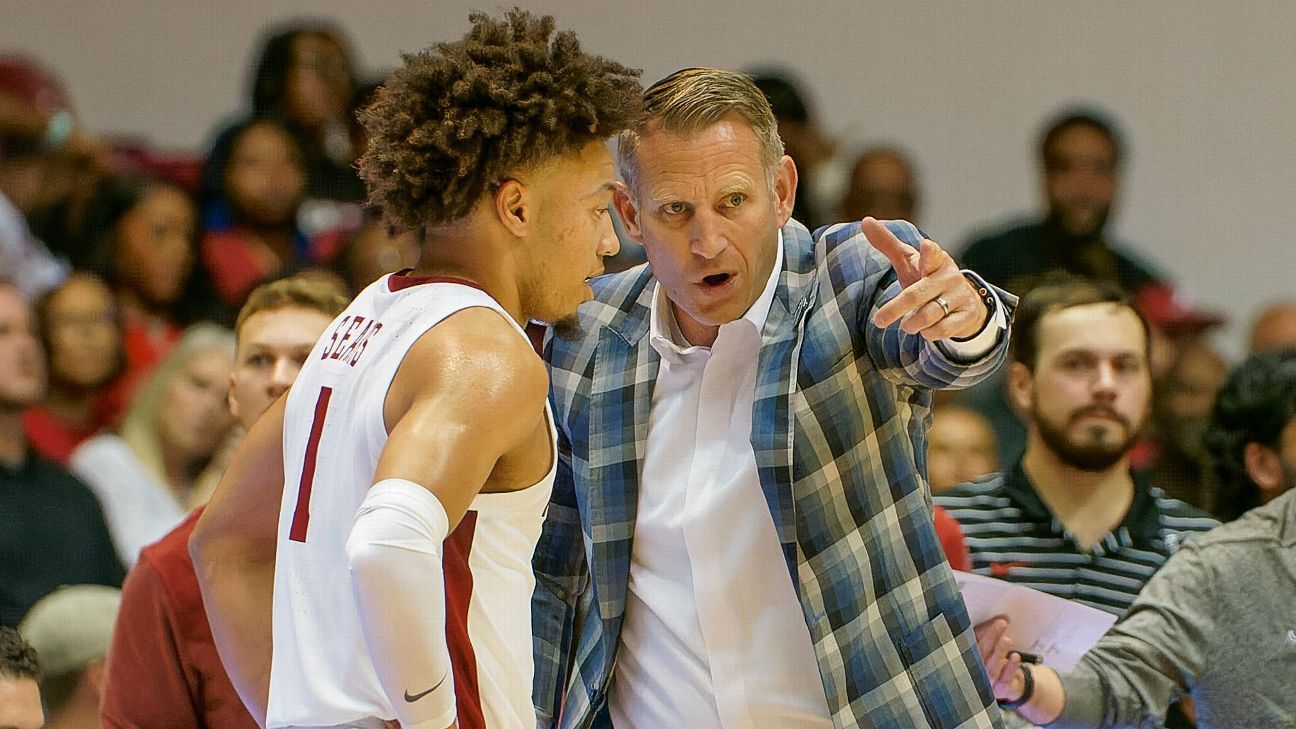With two and a half weeks of men’s college basketball under our belts, we’re all ready to sit down to Thanksgiving dinner, argue with extended family about how our favorite team is handling the opening slate of games — and, regardless of fandom, watch the quarterfinals of the Phil Knight Invitational to see who emerges with an early-season tournament championship.
Among participants, North Carolina stands out as the clear favorite, with odds of +150 to win the tourney, implying a chance to win of 40%. After the Tar Heels’ runner-up finish in the NCAA tournament last season, they held the top spot in ESPN’s Way Too Early Top 25 from last April all through the preseason, and have been the AP Poll’s No. 1 team three weeks in a row.
And why shouldn’t they? Four of their five starters returned, Northwestern transfer Pete Nance replaced the departed Brady Manek, and three 4-star recruits are coming off the bench. The consensus seems to be that North Carolina’s unexpected trip to the Final Four last season tells us everything we need to know about this powerhouse: A similarly deep tournament run is in store again this year.
Despite the narrative, ESPN Analytics’ College Basketball Power Index (BPI) is unconvinced.
The blue blood began the season ranked 15th by the model, and has only dropped since, to their current position in 23rd. On a season level, BPI sees the Tar Heels with just a 2% chance to return to the championship game in April. As for this weekend’s invitational, BPI prefers Alabama, giving them a nearly 32% chance to win, compared to the Tar Heels 20% chance.
Before we examine why, here’s a quick refresh on what goes into BPI. In the preseason, the model considers four factors to determine team strength: the quantity of experience on the roster (including transfers); the quality of those players; recruiting rankings for incoming freshmen (with an emphasis on 5-star prospects); and the coach’s past performance. After games begin, the ratings update daily based on team performance (find a deeper dive here).
With those factors in mind, what does BPI see that we might not? First is returning production. For each returning player, the model takes the highest percentage of team minutes they played in a previous season. It then adds these up for each team, creating a best-case for returning minutes. North Carolina slides in at just 122nd in this measurement.
Despite losing just one starter, Manek was a big part of the Tar Heels’ starting production. Nance is being asked to play more minutes than he did last season against weaker competition (North Carolina was 19th last season in strength of schedule, while Northwestern was 42nd). Already this season, North Carolina’s starting five has accounted for 86% of its minutes played, the second-highest in Division I.
Looking beyond minutes, these players rank just 41st on offense and 21st on defense, using individual player ratings from previous seasons. That might not match how we view the March Madness finalist, but BPI isn’t affected by recency bias.
Even after being within two minutes of a national title, North Carolina finished last season 18th in BPI. Along with falling short of a first-rate recruiting class, ranked 16th by ESPN, the data adds up to a BPI value that doesn’t match the national expectations for this team.
Alabama’s odds to win, meanwhile, are at +600, an implied probability of 14% that places the Crimson Tide behind Michigan State and Oregon as well as North Carolina. Starting the season at No. 20 in the polls, then being jumped by Michigan State despite moving up two spots, the Crimson Tide aren’t thought of as favorably as the Tar Heels. In contrast, BPI had Alabama eighth going into the season, and it has since moved to seventh.
Compared to North Carolina, Alabama actually ranked slightly worse in returning production, clocking in at 143rd, but its returning and transfer players ranked more similarly than most would expect, landing 31st on defense and 42nd on offense. These teams’ BPIs from 2021-22 are close, as Alabama finished the season ranked 24th and Nate Oats and Hubert Davis even have surprisingly similar efficiency track records.
Given the model thinks North Carolina is overrated, then, why does it prefer Alabama? It comes down to recruiting.
Alabama had the third best recruiting class in the country, including signing two 5-star recruits. Brandon Miller (No. 9 in ESPN 100) and Noah Clowney (No. 67) are currently starting, while Jaden Bradley (No. 19) and Rylan Griffen (No. 53) are top-5 on the team in MPG. That incoming talent makes the Tide the deeper team, significantly enough for BPI to place them seven spots higher than North Carolina to start the season, and their early performance (3-1 against the spread by an average of 13.1 points per game) has been enough to keep them high while North Carolina slides.
Ultimately, should we trust North Carolina’s No. 1 poll ranking, or its No. 23 BPI ranking? Here are the early-season results:
Now, when your dinner guests turn on the TV at 1 p.m. ET and tune into ESPN to watch North Carolina begin the invitational, you’ll know North Carolina’s 20% chance doesn’t guarantee a tourney win. Instead, the evidence suggests the Crimson Tide have the best chance at coming out on top.
Odds are provided by Caesars Sportsbook as of the morning of November 23.
